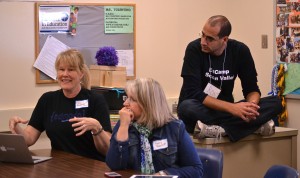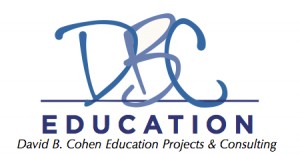This blog post first appeared at InterACT on Jan. 25, 2014. Next week, at the Learning Forward Conference in Nashville, TN, I’ll join colleagues from my district in a presentation on this topic, coincidentally titled “Evolving Professional Development: Re-Examining Our Efforts” (Session F38, if you happen to be at the conference).
Look for Twitter activity from the conference under the hashtag #learnfwd14 and follow @LearningForward. I’ll be tweeting plenty as well from Monday through Wednesday, (follow: @CohenD).
In late 2012, Accomplished California Teachers produced a policy report that recommended expanded roles for teachers in schools and districts, with a third-tier advanced certification for teacher leaders. You can read more about our proposals here. Since then, I’ve offered occasional blog posts highlighting some promising practices that advance our profession in the right direction.
One of the main areas of promise for teacher leadership is in professional development. Most teachers I’ve talked to and engaged with are craving both more and better professional development, an impression supported by survey data from American teachers. Even if we had the resources available, many of us lack the time to put resources to good use: compared to our international peers, we spend much more time in the classroom, leaving less time for professional learning and collaboration. It would be a step in the right direction if we could even set aside a protected, guaranteed one-hour per week, but in many schools and districts even that hour is hard to come by.
It seems clear to me that the key to both incremental change and the eventual transformation of our profession is not only to expand the capacity of teachers to achieve professional growth, but also to design and lead professional growth experiences. To that end, we need teachers who are increasingly aware of developments in the field, increasingly networked and engaged, and increasingly willing and able to lead.

EdCamps, like this one in Palo Alto (2/22/14) offer teachers a chance to learn from each other informally.
We’re moving in the right direction, with more teachers taking on coaching and support roles in schools and districts. We have ever-expanding opportunities for learning and networking online, formally and informally, and those efforts are leading to more face-to-face networking as well.
But in the long run, small changes won’t be enough. My hope is that we are gradually building a critical mass of teachers who expect to have more say in their professional development, and who are developing the knowledge, skills, and disposition to take ownership of that work and lead it. That approach would be a significant improvement over the predominant model – trainings and presentations too often conducted by outside providers who won’t be around to engage more deeply or regularly. These sessions are unaffectionately known as sit ‘n’ git or spray and pray professional development.
For a recent example of a better way, I offer you the retooled professional development day as conducted by Palo Alto Unified (PAUSD) elementary teachers earlier this school year. Early in the school year, teachers were invited to submit proposals for professional learning experiences that they could lead for their peers. Those proposals were organized to create a one-day, intra-district education conference. Teachers from a dozen elementary schools met on the campus of one of the high schools and took over one of the buildings, choosing for themselves the sessions that best met their needs. It was a first for the district, and hopefully the start of something that will continue, and even improve.
The opportunity to share learning and ideas with colleagues beyond the school site but still within the district increases the likelihood of ongoing collaboration. The practice of organizing professional learning for one’s peers increases the the knowledge, skills, and leadership capacity of the presenting teachers. And hopefully, witnessing this productive and successful approach inclines the district administration and the community to support the idea of growing our own expertise and leadership, investing in our own people more often, depending less on outside personnel, organizations and companies to do for us what we can do for ourselves.
But not to get carried away, I would add the following ongoing concerns. First of all, if this approach is limited to professional development days, we’ll see only marginal improvements. I would love to see events like this continue, but they should become secondary in focus behind more consistent and ongoing professional learning. And secondly, it’s important for teachers and our associations to take the lead in guaranteeing the quality and efficacy of professional learning approaches that we design or direct . That kind of accountability is something we must embrace if we hope to be full partners in the leadership of our schools and districts.
If we accept that responsibility, we must also have the full support of our districts and schools; we must be afforded the time and trust to navigate this learning, to analyze and reflect on our work, to make some mistakes along the way. Every bit of reading I’ve done on organizational management (much of which I’ve written about) suggests that a thriving team doing complex work depends an having an atmosphere of safety and trust. Teachers will not commit to take chances on new roles and responsibilities if administrators or school boards are perceived as enforcers waiting to pounce on a mistake.
We can do this, together. In teaching, it’s called gradual release of responsbility, where we model what students need to do, practice with them, and provide feedback as needed to help them soar independently. In the field of education, we need teachers, unions, administrators, school boards and policy makers to be forward-thinking enough to foster conditions in which teachers can gradually assume both greater control and greater responsibility for the continual improvement of schools.
